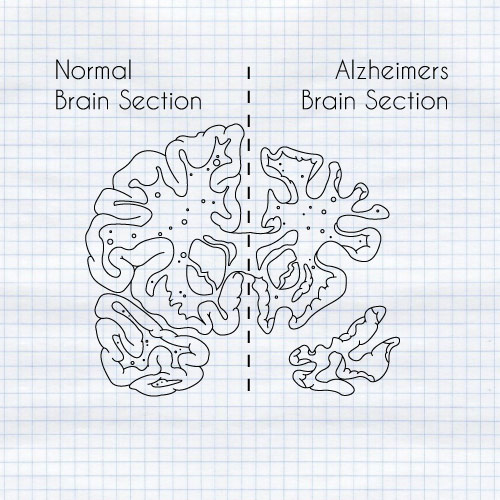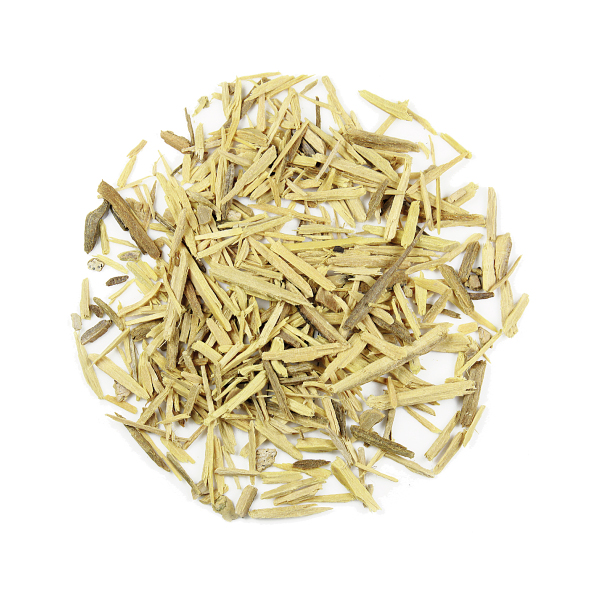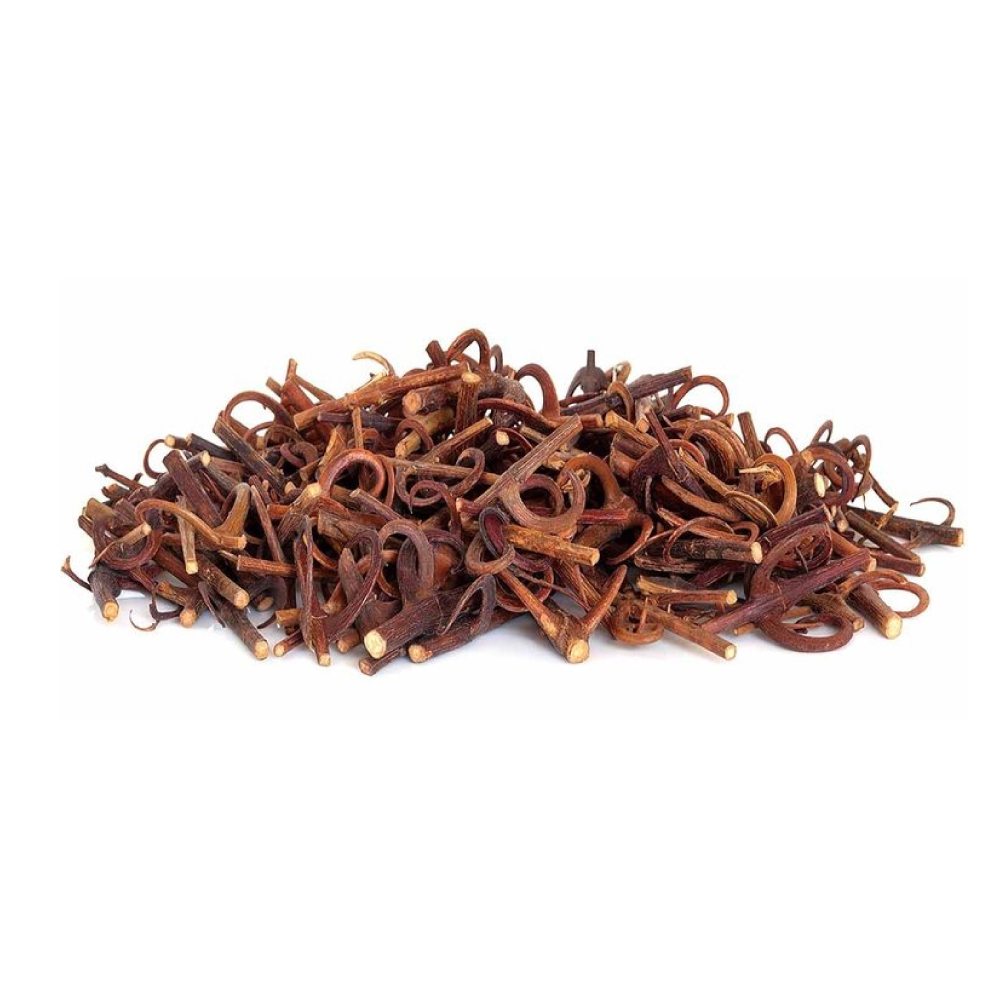With an aging population, one of the major concerns is Alzheimer's and other forms of Dementia — which unfortunately has no cure.
Alzheimers and dementia (AD), have become a major epidemic in North America.
An estimated 1 in every 9 people over 65 in America have Alzheimer's.
Worldwide, nearly 44 million people have Alzheimer's, or similar dementia costing the world roughly 605 billion dollars [1].
In light of this, it has become increasingly important to find ways to prevent this disease before it arrives.
In general, Alzheimer's disease starts with mild impairments in memory, communication patterns, and depression, and develops into much worse symptoms of cognitive impairment, and eventual death.
The average lifespan after diagnosed with Alzheimer's is 4-8 years [1].
Here, we'll go over some of the best herbal supplements available for preventing or slowing the onset of Alzheimer's disease.
What is Dementia and Alzheimer’s Disease?
There are actually several different forms of dementia, here are the main ones:
1. Alzheimer's
Alzheimers is characterized by beta-amyloid deposits. This is the most common form of this disease. These deposits are a result of the activity of acetylcholinesterase. They build up over time and will eventually lead to the death of that synapse.
2. Vascular Dementia
Vascular dementia is characterized by a narrowing of the blood vessels feeding the brain, which then limits the supply of nutrients and oxygen. With less oxygen and nutrients reaching the brain, it becomes less and less functional over time.
3. Lewy Body Dementia
This form of dementia is characterized by deposits known in the scientific community as “alpha-synuclein deposits” which can be found in the nerve tissues.
4. Others
There are other theories as well explaining what causes Alzheimers and other dementias. Some of these are suggested to be through dopamine dysfunctions, and others through a form of diabetes of the brain. These are highly debated in the medical community however and evidence has been found to both support and disprove these theories,
All of these forms of dementia ultimately lead to a synapse loss, oxidative damage, and degeneration of brain tissues.
The beta-amyloid deposits found in most Alzheimers cases are tightly linked to oxidative damage.
These plaques of amyloid fibrils are formed through the enzyme acetylcholinesterase, which is used to break apart the important neurotransmitter acetylcholine. These issues are then exacerbated by other aspects of this disease such as a lowered nutrient supply caused by vascular problems and increased oxidative damage from free radicals [7].
Acetylcholinesterase has become a key target in combatting an preventing Alzheimers and is also associated with the cognitive improvements in those using nootropics to improve general cognitive function.
Treatment
The main treatment method for Alzheimer's is currently through acetylcholinesterase inhibitors. Acetylcholinesterase breaks down the neurotransmitter acetylcholine, which is responsible for various important functions in the brain as mentioned earlier. [9].
A) Acetylcholine
Targeting acetylcholine production, and slowing its breakdown, also happens to be a common goal with many nootropics. Acetylcholine is responsible for all kinds of thought processes in the brain and is also responsible for communication with the bodies muscles.
By taking a combination of substances that inhibit acetylcholinesterase (the enzyme that breaks down acetylcholine), and simultaneously delivering the building blocks the brain needs to make new acetylcholine, brain performance can improve.
Inhibiting acetylcholinesterase may reduce beta-amyloid plaque formation.
B) Antioxidants
Nootropics often include antioxidants as well, which address the other common finding in Alzheimer's/dementia.
With free radical damage found commonly in various areas of the brain, consuming antioxidants can reduce this damage significantly.
Polyphenols are a class of chemicals found throughout the plant world, some plants with a significant study done on the antioxidant potential of the polyphenols contained include the tea plant (Camellia sinensis), and yerba maté (Ilex paraguariensis).
The polyphenols in these plants can be isolated and concentrated and have been found to produce significant free radicle scavenging ability, and have been reported to produce these effects in the hippocampus of the brain, which is where most of the oxidative damage is found in Alzheimer's patients.
Other well known and powerful phenolic antioxidants include myricetin from many fruits and vegetables, resveratrol from wine and sarsaparilla (Smilax officinalis), and curcumin from turmeric (Curcuma longa).
C) Vitamins
Vitamin deficiencies have also been found in many Alzheimer's and dementia patients [7].
Vitamin C, for example, is needed for brain cells to synthesize neurotransmitters from tyrosine, as well as being a powerful antioxidant [5]. Many suggest that an increased intake of this vitamin has been associated with lower levels of cognitive decline over a long period, and should be included in nootropic formulas for this reason.
Herbal Nootropics For Alzheimer's And Dementia.
1. Muira Puama (Ptychopetalum olacoides)
Muira puama (Ptychopetalum olacoides) is one of my favorite herbs for Alzheimer's disease.
It has incredibly powerful effects on cognitive and sexual function, especially in males.
Its main action against Alzheimer's is through Anti-acetylcholinesterase activity, which again means it stops the enzyme that breaks down the important neurotransmitter acetylcholine. Doing this helps prevent the amyloid plaques associated with this process. These amyloid plaques build up and eventually may cause Alzheimer's.
It's best to take Muira puama daily for the best results. (Sources).
2. Periwinkle (Vinca minor)
Periwinkle contains vincamine, which is often found in its synthetic form vinpocetine.
It's an alkaloid that can easily pass the blood-brain barrier and has been found to increase brain metabolism and blood flow. This chemical is often extracted into a concentrated powder to be used as a stand-alone nootropic or more commonly in nootropic formulas.
Vinpocetine is a relatively well-known molecule, and its mechanism of action has been reported to be through several pathways:
Inhibiting the phosphodiesterase-1 enzyme
Inhibiting voltage-dependent sodium ion channels (protecting neurons from damage)
Interacting with glutamate receptors and preventing glutamate damage
Protecting against hypoxia
Increasing cerebral blood flow
Stimulating glucose metabolism and increasing serotonin levels [7].
Due to these effects, and vinpocetine's safety, it has become a very popular addition to many nootropic supplements.
You can find vipocetine here.
3. Catuaba (Trichilia catigua)
Catuaba (Trichilia catigua) provides some of its action through the dopaminergic system of the brain.
This neurotransmitter has been thought to play a role in the development of dementia and Alzheimers for some time, and only recently have researchers began to understand its role in this disease.
In recent studies, dopaminergic compounds in Catuaba have been found to improve some of the behavioral side effects in dementia and Alzheimer's patients [6].
Traditionally in the Amazon, both Catuaba and Muira puama were combined and used to treat most "age-related disorders" including memory and cognitive decline.
These two herbs together are better for this as they appear to have strong synergy and compliment each other well for this use.
You can find a good extract combination of catuaba and muira puama here.
4. Turmeric (Curcuma longa)
(Curcuma longa). Curcuminoids have been suggested to delay Alzheimers and dementia progression, through a variety of actions. It has been reported to be protective against oxidative stress, and correction of beta-amyloid plaque formation [7].
You can find turmeric extract here.
5. Sage (Salvia officinalis)
Sage (Salvia officinalis) has been used for centuries to improve and cleanse the mind. Recent studies back this up, upon the discovery that sage provides antiacetylcholinesterase activity [8] in much the same way as Muira puama.
6. Cats Claw (Uncaria tomentosa)
Researchers from the Medical University of Gdańsk found that the oxindole alkaloid mitraphylline extracted from cat’s claw binds with the amyloid beta 1-40 protein [7].
This is the plaque that forms in the brain that results in Alzheimer's disease.
By binding to these compounds, it makes it easier for the body to eliminate before it becomes a problem.You can find cat's claw on Amazon here.
7. Gingko (Gingko biloba)
Ginkgo biloba is the oldest tree species on earth, likely extending relatively unchanged as far back as 200 million years.
It comes to no surprise then that this ancient tree is useful in fighting many age-related conditions.
In traditional Chinese medicine, its use for age-related memory loss has been documented as far back as 5000 years. Its actions are also through anti-acetylcholinesterase activity (see the pattern yet), as well as through antioxidant, and anti-inflammatory activity.
It's clear that Ginkgo biloba has protective, and preventative effects on Alzheimer's especially — but also with other forms of dementia if used long-term as a preventative agent. [2, 3, 10, 11].
You can find Ginkgo here.
Other Supplements to Consider:
Docosahexaenoic Acid (DHA)
Coenzyme Q10 (CoQ10)
B Vitamins (B6, B12)
Conclusion
With a regular, long-term nootropic approach to preventing and treating Alzheimers and dementia, it is more than likely the rates of these chronic and unfortunate diseases will decline, and quality of life for both the patient and patients family and friends will improve along with it.
Recent Articles
References:
Alzheimers.net. (2016). Alzheimer's Statistics. Retrieved from http://www.alzheimers.net/resources/alzheimers-statistics/
Bastianetto S, (2000). The Ginkgo biloba extract (EGb761) protects hippocampal neurons against cell death induced by beta-amyloid. Eur J Neurosci2000;12(6):1882-90.
DeFeudis FV, Drieu K. Ginkgo biloba extract (EGb 761) and CNS functions: basic studies and clinical applications. Curr Drug Targets 2001;1(1):25-58.
Fernstrom J.D, and Fernstrom M.H. (2007). Tyrosine, phenylalanine, and catecholamine synthesis and function in the brain. Journal of Nutrition. 137. 6. 1539S-1547S
Harrison, F. E., & May, J. M. (2009). Vitamin C function in the brain: vital role of the ascorbate transporter SVCT2. Free Radical Biology and Medicine, 46(6), 719-730. doi:10.1016/j.freeradbiomed.2008.12.018
Martorana, A., & Koch, G. (2014). “Is dopamine involved in Alzheimer’s disease?” Frontiers in Aging Neuroscience, 6, 252. http://doi.org/10.3389/fnagi.2014.00252)
Nutraceuticals World. (2010, May 3). Designing Smart Formulations For The Brain Health Market - Nutraceuticals World. Retrieved from http://www.nutraceuticalsworld.com/issues/2010-05/view_features/designing-smart-formulations-for-the-brain-health-
University Of Newcastle Upon Tyne. (2003, September 1). Sage Improves Memory, Study Shows. ScienceDaily. Retrieved May 7, 2016 from www.sciencedaily.com/releases/2003/09/030901091846.htm
Wattmo C, Minthon L, and Wallin A.K. (2016). Mild versus moderate stages of Alzheimer's disease: three-year outcomes in a routine clinical setting of cholinesterase inhibitor therapy. Alzheimers Research & Therapy. 8:7. DOI: 10.1186/s13195-016-0174-1
Wettstein, A. Cholinesterase inhibitors and Ginkgo extracts - are they comparable in the treatment of dementia? Comparison of published placebo-controlled efficacy studies of at least six months duration. Phytomed2000;6(6):393-401.
Yao Z. The Ginkgo biloba extract EGb761 rescues the PC12 neuronal cells from beta-amyloid-induced cell death by inhibiting the formation of beta-amyloid-derived diffusible neurotoxic ligands. Brain Res 2001;889(1-2):181-90.
















